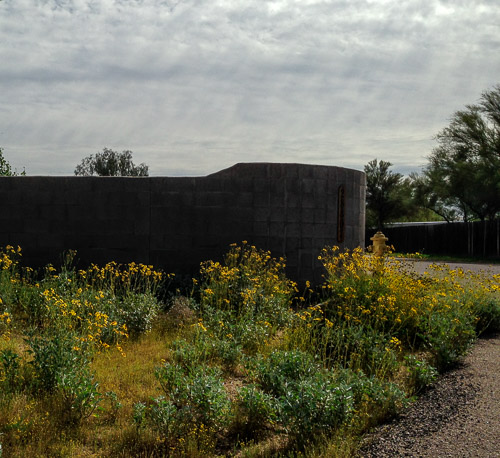
Prior to moving to the North Phoenix area of the Sonoran Desert, I never thought about having a problem with weeds in such an arid region. After all, it is the desert with little water so there shouldn’t be a lot of weeds.
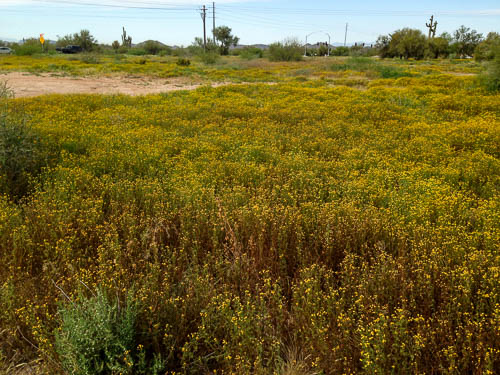
Wrong!
It turns out that desert plants, which naturally includes weeds, are pretty resilient. Winter rains from the end of December through February provide enough showers to enable the weeds to germinate; the more water, the more weeds.

This field at the end of our street has many, many weeds and among them are some very pretty willdflowers such as the orange Globe Mallow (Sphaeralcea ambigua) in the foreground of the photo below.

Globe Mallows grow well along the roadsides and in open fields and have a color range from light to dark orange. Once in a while one can discover a rare pink Globe Mallow or an even more rare red variety.
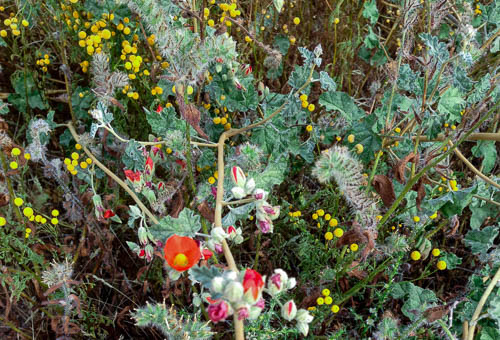
The Globe Mallow in the photograph above adds variety in the desert weed landscape of silver, greens and yellows.
Triangle Leaf Bursage (Ambrosia deltoidea) is an abundant weed found in many open spaces.
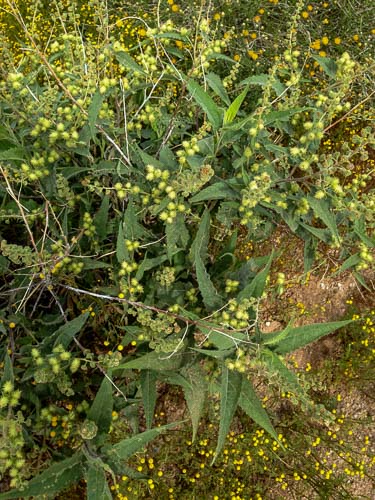
In fields that are left untended for a number of years, a tree may take hold. This appears to be a Mesquite of some variety.
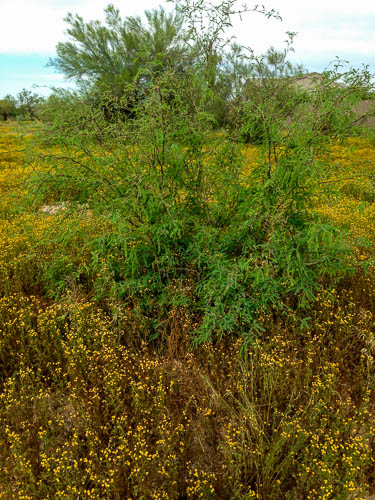
Yes wildflowers are pretty, but weeds can be more than a nuisance. As weeds dry out, they create a fire hazard. When the temperatures rise to above the ninety degree threshold and the rains become more scarce, spent wildflowers and weeds become tinder.
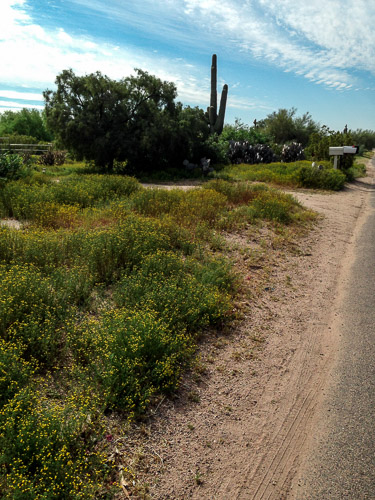
It is recommended that there is a defensible space around homes to help avoid fire spreading to dwellings. There was more to know about the desert ecosystem and weeds than I ever imagined prior to my residency in Arizona.
JBRish.com originally published this post
See more JBRish gardening and desert gardening posts here HERE